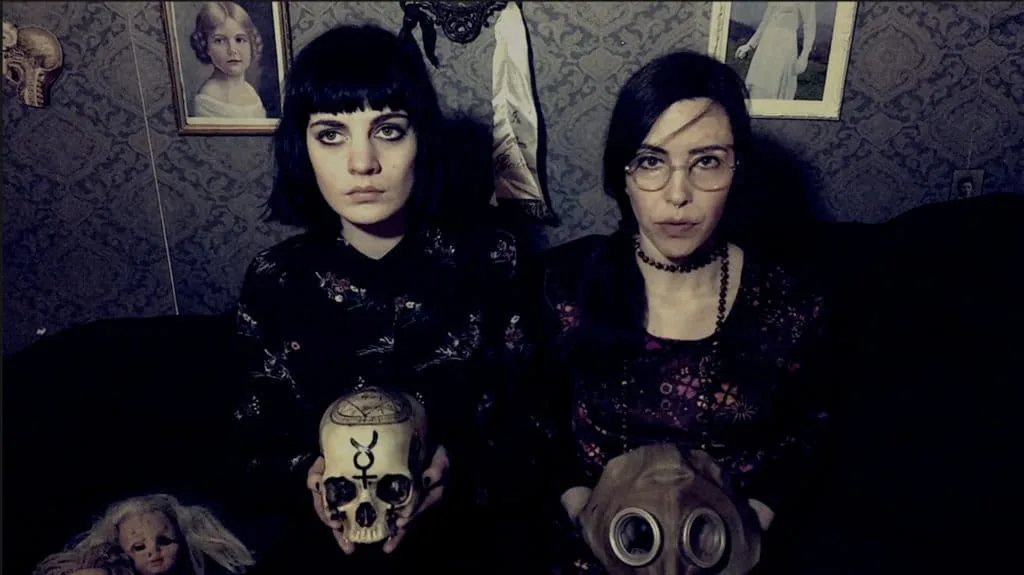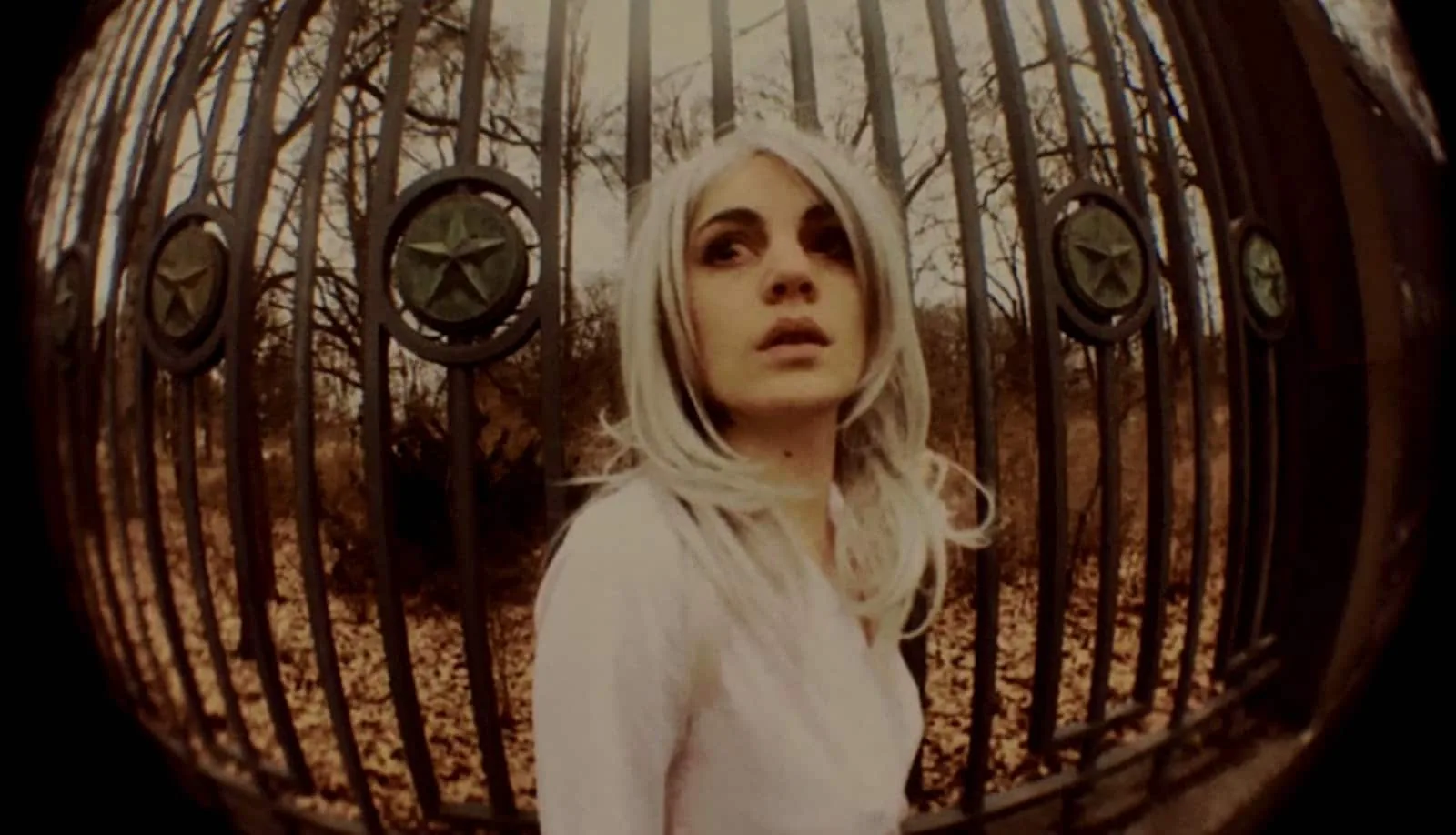
Phantasmagoria is a film which shows, from the very beginning, that it has no truck with conventional storytelling. And how you feel about that will depend on your taste for this level of experimental fare – not just in the sense of a film dispensing with signposted narrative, or character, but also in how you deal with films that shift in tone from one thing to another, at least initially. For example: at the beginning of Phantasmagoria, and in a none-too-subtle nod to Twin Peaks, ‘Diane Cooper’ (Rachel Audrey) records herself about to go on a trip to Poland to investigate some mysterious phenomena. Except it looks as though she’s already in Poland…and the airport she rocks up to is not an airport…then she chooses some washing detergent as a tasty in-flight beverage, before looking straight to screen and joining in with the canned laughter. There’s no question here of being allowed to settle in to the viewing experience. It’s not meant to be comfortable.

That all being said, that early dark comedy largely passes away as the film progresses, and horror elements move to the fore, providing something very strange and visually-strong. I can see entirely why director Cosmotropia de Xam’s music and film have been enthusiastically snapped up by Nigel Wingrove at Redemption/Salvation, as Phantasmagoria chimes perfectly with Salvation. And so to what actually happens here: once in ‘Poland’, Diane begins looking for the strange phenomena she’s heard about. At first, there’s nothing – she thinks this may all be the proverbial ‘something in the water’, and she’s mystified by the almost empty streets and dilapidated buildings (as a paean to Brutalism, the film is quite something in its own right).
But then Diane encounters a strange young woman in a case of ‘who’s investigating who?’ The girl is called Valentina (an unashamed love-letter, in name and appearance, to the Valentina comics of Guido Crepax). Valentina tries to explain that there is something evil here, making claims of a ‘beast’ which has not only followed her for years, but threatens everyone else as well. Diane is at first nonplussed by this claim, but madness is contagious, and Diane soon gets swept up in it too.
How best to define all of this? It’s not easy. The first thing which springs to mind is, given that the film doesn’t rely on dialogue very much, but rather opts to put a lot of very striking visuals front and centre, you could almost dispense with the dialogue that is here and just stick with the Mater Suspiria Vision soundtrack as an accompaniment (MSV being the director’s musical project, so unsurprisingly a very good fit here). You can read the situation via the actresses and their increasingly nightmarish visions and asides rather well. In terms of film, Phantasmagoria is somewhere between the very early experimental short films of David Lynch and Jean Rollin, had Rollin ever directed a Coil video. The Gothic or horror elements – bloodied women, nuns’ habits, a presence in the woods – are all present here, interwoven through a bizarre sequence of events and riddles. It is also worth saying that, where a thousand indie directors have tried – and failed – to make their films look authentically like some 70s reel found in an attic somewhere, Cosmotropia de Xam has done it very successfully.
Phantasmagoria is very much a piece of outsider art which defies easy categorisation, but may be of interest to those amongst you who enjoy films which are more sensory than perfunctory, so with all that in mind – go for it. I also recommend Mater Suspiria Vision for anyone whose tastes turn to abstract, dark instrumental music.
Phantasmagoria is available via Salvation Films: click here for more information.
